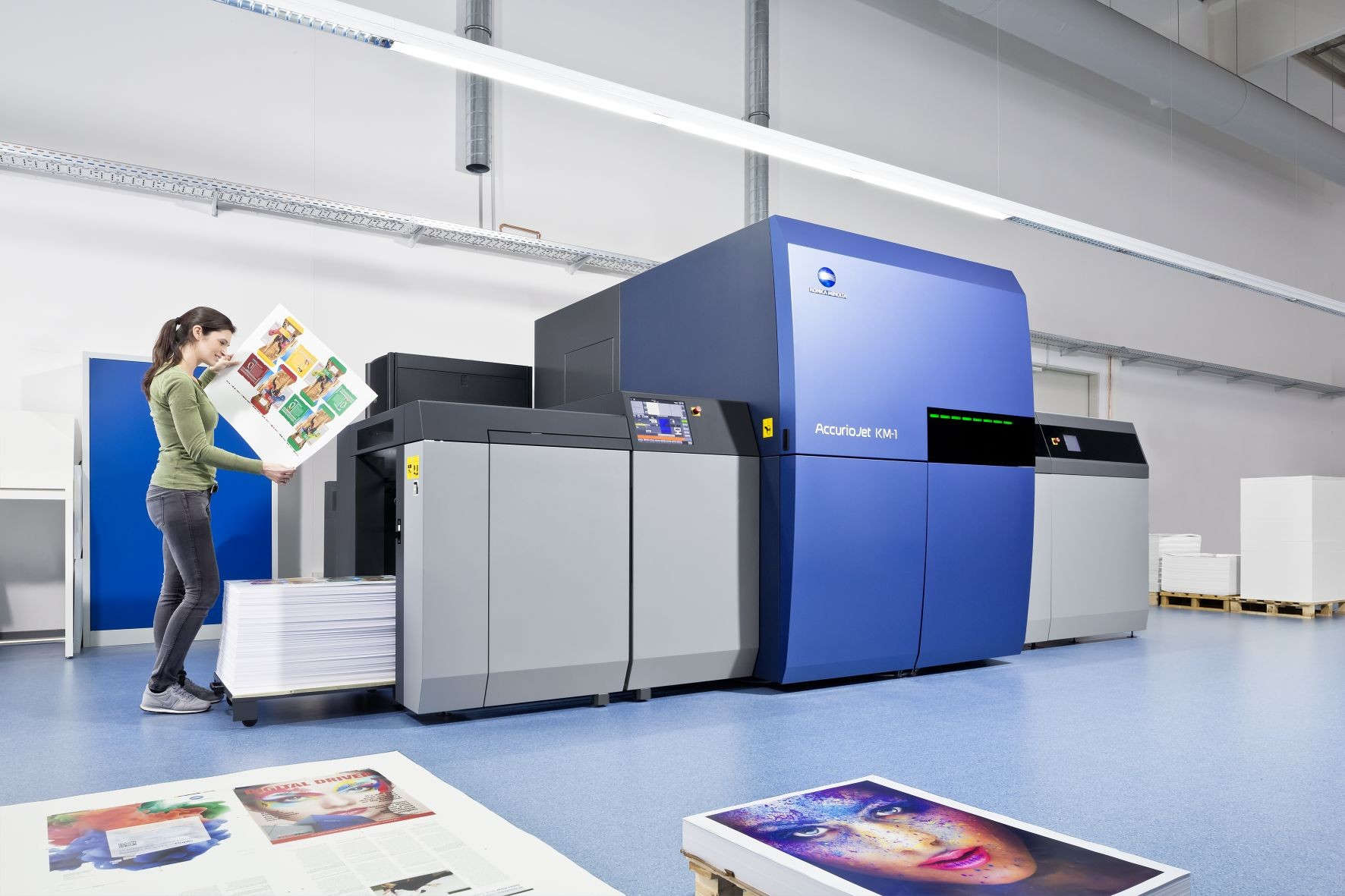Production Inkjet
September 2nd, 2020 by Paul Perez

Ink has recently roared back into the mainstream printing space with virtually all print manufacturers releasing some form of an inkjet printer. The “Inkjet is the future” message is plastered all over print publication websites and has inkjet touted as the savior of print for its versatility. Below are the ins and outs of the technology and a few areas to consider before making the jump.
Inkjet costs
The first thought that comes to mind when discussing inkjet is cost. Conventional wisdom has been that toner is cheaper than ink – at least in the desktop printer space. While that certainly is true, offset presses have been running at a lower CPC than digital (laser) presses for decades. How does this make any sense? The breakpoint between printing with digital toner vs. offset is typically determined by volume. If there is enough volume to justify the plate-making required to run an offset job, then an offset machine will stamp out quality work for a fraction of the cost of digital toner. However, if the requested volume of a print job is beneath the break-even cost of offset setup, the ease of pressing “print” on a digital machine can’t be beaten.
Now let us welcome inkjet. The newly designed inkjet technology combines the agility and ease of use of a digital toner machine with a similarly low cost per page of an offset unit. It has no regard for the volume of a particular job. With no setup cost, short runs are profitable, and the low CPC stretches through long runs as well.
Inkjet combines the best of both worlds in terms of job cost per page and ease of job set up. However, there are a couple of caveats on the pricing side to understand. Most inkjet service models require inks to be purchased separately from the maintenance agreement. If your print jobs require you to paint the page with dense color, and you have to pay for your ink, it may be beneficial to lean on a toner inclusive contract that is offered on most digital toner devices.
Inkjet inks include chemical additives to allow for the digital printing process. These additives make inkjet inks slightly more expensive than traditional lithographic inks as well. Also, the equipment cost of inkjet may deter some from entering the market. To date, most inkjet machines are geared toward moving volume over from offset presses. Thus, they have to be heavy-duty units built to run around the clock. The price tag for the equipment is usually significantly more expensive than a digital toner press.
Inkjet quality
If offset sets the benchmark for quality, and digital toner is close but falls somewhere short, where does inkjet fit? The answer is complicated. Not all inkjet printers are created for the same application. Some are built for commercial printing environments and will compete directly with offset and toner presses.
In contrast, others are engineered to allow for color printing with some quality shortfalls (communication color). The various types of ink required by inkjet units constitute a significant factor in how the quality of a printed piece will eventually turn out. Some inks dry on top of the substrate with the help of UV light or a drying system, and thus allow for a more vibrant look. Others are absorbed by the substrate and get dulled within the pores of the paper. This absorption makes it difficult and sometimes impossible to print on glossy or coated stocks.
The communication color type of machines mentioned above falls in this area. They are designed to print at high speeds with low variable costs but sacrifice the quality that is not always beneficial. These machines typically fit in areas such as schools, Churches, and statement printing houses. Printing in color can help to bring attention to specific areas and, at the same time, help with memorization - Hence the “communication color moniker” and the prevalence in schools.
Inkjet Niche
With the help of CRM software, and artificial intelligence that can predict customer buying habits, adding Variable Data too long print runs has become an area that many print houses are exploring. Some of the new commercial inkjet printing presses are equipped to handle extensive data pulls and merges to produce personally customized marketing pieces as well and billing statements. While digital toner machines can handle Variable Data as well, the cost of a long variable data run with toner may not be advantageous, and the process of offset printing eliminates it from variable data altogether.
Most inkjet units on the market currently are geared toward commercial printing and high-volume print environments. Inkjet may eventually be the preferred delivery method, however small to medium reprographics areas that focus on short to medium print runs may find that the equipment cost outweighs any reductions in cost per copy. In this case, sticking to a digital toner device may be a better fit. On the other hand, if the volume is plentiful, and variable data is on the horizon, inkjet may be an option to consider.
Posted in: Business Technology

